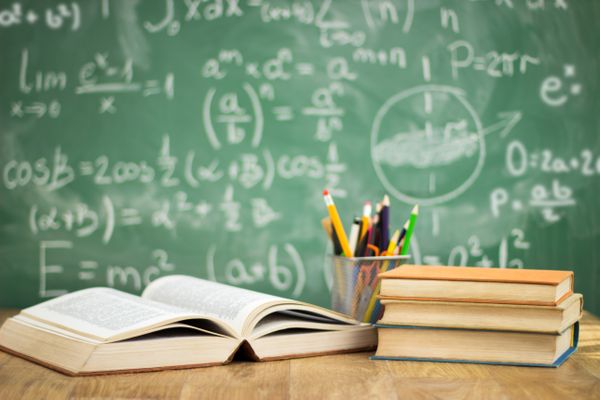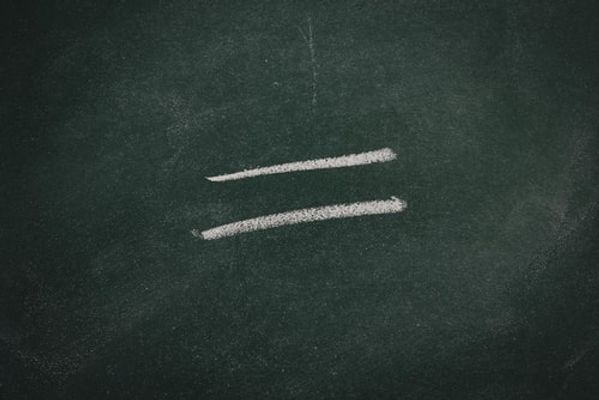1.6.3
Ethical Issues
The Digital Divide
The Digital Divide
The digital divide is an important ethical issue in today's society, and the divide is growing.


What is the digital divide?
What is the digital divide?
- Not everyone has access to computers and the Internet.
- Those without access to technology are at a disadvantage in terms of education, welfare and career opportunities.


Education and career
Education and career
- Those without access to technology do not have access to free educational websites, and often cannot afford to pay for formal education.
- This can have huge impacts on their career progression.
Net Neutrality
Net Neutrality
Net neutrality concerns how bandwidth is controlled on the Internet.


Net neutrality
Net neutrality
- For a long time, a key principle of the Internet was that all packets are treated equally.
- That means that if two websites both want access to a network, they should both have equal response times.


Collapse of net neutrality
Collapse of net neutrality
- Net neutrality is now being threatened, particularly in the United States of America.
- Companies are interested in paying Internet Service Providers (ISPs) to prioritise their traffic.


Impacts of net neutrality collapsing
Impacts of net neutrality collapsing
- If net neutrality collapses it could mean that the large, rich technology companies could have more control over the traffic of the Internet.
- They could pay to have their traffic prioritised over their competitors.
1Computer Systems
1.1Systems Architecture
1.2Memory & Storage
1.2.1Types of Memory
1.2.2Flash Memory
1.2.3Virtual Memory
1.2.4Exam-Style Questions - Primary Memory
1.2.5Capacity
1.2.6Solid State Storage
1.2.7Magnetic Storage
1.2.8Examples of Magnetic Storage
1.2.9Optical Storage & its Properties
1.2.10Examples of Optical Storage
1.2.11End of Topic Test - Computer Systems
1.2.12Grade 9 - Storage
1.2.13Exam-Style Questions - Storage
1.2.14Units of Information
1.2.15Number Bases
1.2.16Converting Number Bases
1.2.17Hexadecimal
1.2.18Binary Arithmetic
1.2.19Representing Text
1.2.20ASCII & Unicode
1.2.21Representing Images
1.2.22Representing Sound
1.2.23Data Compression
1.2.24End of Topic Test - Representation
1.2.25Exam-Style Questions -Data Conversions
1.3Computer Networks, Connections & Protocols
1.3.1Benefit of Networks
1.3.2Network Performance
1.3.3Networks: How Do Packets Get Routed?
1.3.4Types of Networks
1.3.5Client-Server Model
1.3.6Pros & Cons of Client-Server Model
1.3.7Peer-to-Peer Model
1.3.8Pros & Cons of Peer-to-Peer Model
1.3.9Network Hardware
1.3.10What is the Internet?
1.3.11URLs
1.3.12DNS & Web Hosting
1.3.13The Cloud
1.3.14Pros & Cons of the Cloud
1.3.15Exam-Style Questions - Networking Models
1.3.16Topology
1.3.17WiFi
1.3.18WiFi Encryption
1.3.19IP Addresses
1.3.20MAC Addresses
1.3.21Network Protocols
1.3.22Application Protocols
1.3.23Layers
1.3.24Advantages of Layering
1.3.25Exam-Style Questions - Network Protocols
1.4Network Security
1.5Systems Software
1.6Ethical, Legal, Cultural & Environmental Concern
1.6.1Open Source vs Proprietary Software
1.6.2Licensing Issues
1.6.3Ethical Issues
1.6.4Ethical Issues 2
1.6.5Exam-Style Questions - Ethical Issues
1.6.6Legal Issues
1.6.7Legal Issues 2
1.6.8Freedom of Information Act (2000)
1.6.9Cultural Issues
1.6.10Environmental Issues
1.6.11Positive Environmental Impact
1.6.12Privacy Issues
1.6.13Stakeholders
1.6.14End of Topic Test - Software & Issues
2Computational Thinking, Algorithms and Programming
2.1Algorithms
2.1.1Computational Thinking
2.1.2Algorithmic Thinking
2.1.3Pseudocode & Flow Diagrams
2.1.4Interpreting & Correcting Algorithm
2.1.5Completing Algorithms
2.1.6Search Algorithms
2.1.7Binary Search
2.1.8Overview of Sort Algorithms
2.1.9Bubble Sort & Insertion Sort
2.1.10Merge Sort
2.1.11Exam-Style Questions - Sorting Algorithms
2.2Programming Fundamentals
2.3Producing Robust Programs
2.4Boolean Logic
Jump to other topics
1Computer Systems
1.1Systems Architecture
1.2Memory & Storage
1.2.1Types of Memory
1.2.2Flash Memory
1.2.3Virtual Memory
1.2.4Exam-Style Questions - Primary Memory
1.2.5Capacity
1.2.6Solid State Storage
1.2.7Magnetic Storage
1.2.8Examples of Magnetic Storage
1.2.9Optical Storage & its Properties
1.2.10Examples of Optical Storage
1.2.11End of Topic Test - Computer Systems
1.2.12Grade 9 - Storage
1.2.13Exam-Style Questions - Storage
1.2.14Units of Information
1.2.15Number Bases
1.2.16Converting Number Bases
1.2.17Hexadecimal
1.2.18Binary Arithmetic
1.2.19Representing Text
1.2.20ASCII & Unicode
1.2.21Representing Images
1.2.22Representing Sound
1.2.23Data Compression
1.2.24End of Topic Test - Representation
1.2.25Exam-Style Questions -Data Conversions
1.3Computer Networks, Connections & Protocols
1.3.1Benefit of Networks
1.3.2Network Performance
1.3.3Networks: How Do Packets Get Routed?
1.3.4Types of Networks
1.3.5Client-Server Model
1.3.6Pros & Cons of Client-Server Model
1.3.7Peer-to-Peer Model
1.3.8Pros & Cons of Peer-to-Peer Model
1.3.9Network Hardware
1.3.10What is the Internet?
1.3.11URLs
1.3.12DNS & Web Hosting
1.3.13The Cloud
1.3.14Pros & Cons of the Cloud
1.3.15Exam-Style Questions - Networking Models
1.3.16Topology
1.3.17WiFi
1.3.18WiFi Encryption
1.3.19IP Addresses
1.3.20MAC Addresses
1.3.21Network Protocols
1.3.22Application Protocols
1.3.23Layers
1.3.24Advantages of Layering
1.3.25Exam-Style Questions - Network Protocols
1.4Network Security
1.5Systems Software
1.6Ethical, Legal, Cultural & Environmental Concern
1.6.1Open Source vs Proprietary Software
1.6.2Licensing Issues
1.6.3Ethical Issues
1.6.4Ethical Issues 2
1.6.5Exam-Style Questions - Ethical Issues
1.6.6Legal Issues
1.6.7Legal Issues 2
1.6.8Freedom of Information Act (2000)
1.6.9Cultural Issues
1.6.10Environmental Issues
1.6.11Positive Environmental Impact
1.6.12Privacy Issues
1.6.13Stakeholders
1.6.14End of Topic Test - Software & Issues
2Computational Thinking, Algorithms and Programming
2.1Algorithms
2.1.1Computational Thinking
2.1.2Algorithmic Thinking
2.1.3Pseudocode & Flow Diagrams
2.1.4Interpreting & Correcting Algorithm
2.1.5Completing Algorithms
2.1.6Search Algorithms
2.1.7Binary Search
2.1.8Overview of Sort Algorithms
2.1.9Bubble Sort & Insertion Sort
2.1.10Merge Sort
2.1.11Exam-Style Questions - Sorting Algorithms
2.2Programming Fundamentals
2.3Producing Robust Programs
2.4Boolean Logic

Unlock your full potential with GoStudent tutoring
Affordable 1:1 tutoring from the comfort of your home
Tutors are matched to your specific learning needs
30+ school subjects covered